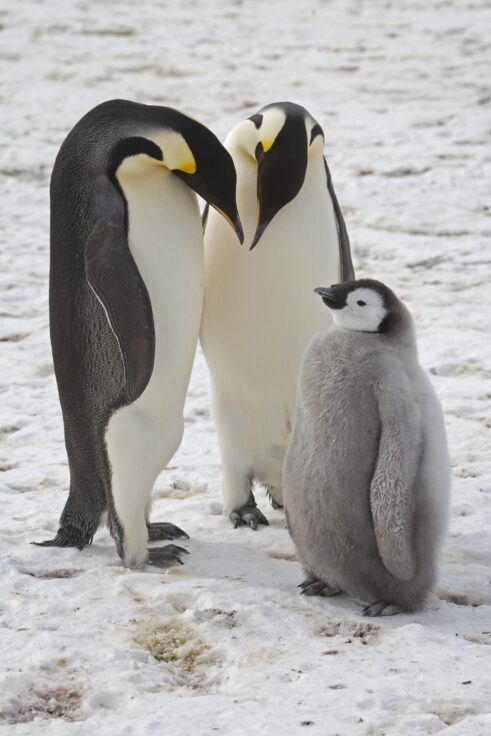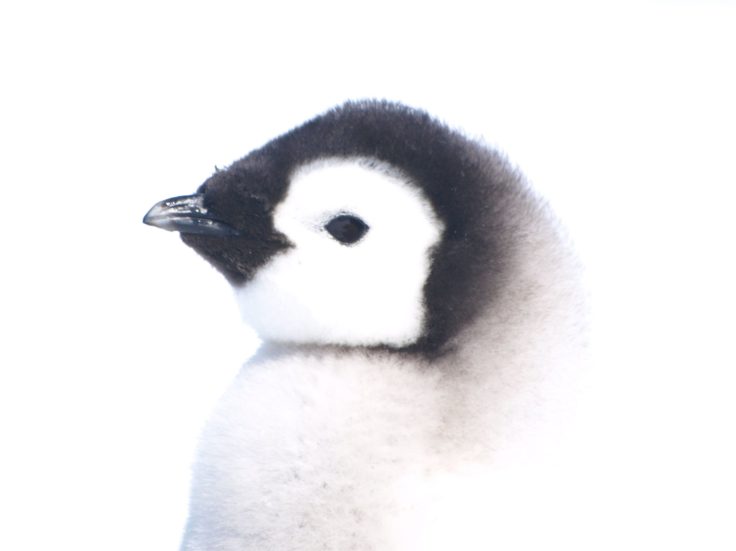In a new study published this week (Wednesday 9 October) in the journal Biological Conservation, an international team of researchers recommends the need for additional measures to protect and conserve one of the most iconic Antarctic species – the emperor penguin (Aptenodytes forsteri).

The researchers reviewed over 150 studies on the species and its environment as well as its behaviour and character in relation to its breeding biology. Current climate change projections indicate that rising temperatures and changing wind patterns will impact negatively the sea ice on which emperor penguins breed; and some studies indicate that emperor populations will decrease by more than 50% over the current century. The researchers therefore recommend that the IUCN status for the species be escalated to ‘vulnerable’; the species is currently listed as ‘near threatened’ on the IUCN Red List. They conclude that improvements in climate change forecasting in relation to impacts on Antarctic wildlife would be beneficial, and recommend that the emperor penguin should be listed by the Antarctic Treaty as a Specially Protected Species.
Lead author Dr Philip Trathan, Head of Conservation Biology at British Antarctic Survey, says:
“The current rate of warming in parts of the Antarctic is greater than anything in the recent glaciological record. Though emperor penguins have experienced periods of warming and cooling over their evolutionary history, the current rates of warming are unprecedented.
“Currently, we have no idea how the emperors will adjust to the loss of their primary breeding habitat – sea ice. They are not agile and climbing ashore across steep coastal land forms will be difficult. For breeding, they depend upon sea ice, and in a warming world there is a high probability that this will decrease. Without it, they will have little or no breeding habitat.”

Greater protection measures will enable scientists to coordinate research into the penguins’ resilience to a range of different threats and stressors.
Dr Peter Fretwell, remote sensing specialist at British Antarctic Survey and co-author says:
“Some colonies of emperor penguins may not survive the coming decades, so we must work to give as much protection as we can to the species to give them the best chance.”
The UK, supported by a number of other countries whose researchers have engaged in this scientific work, notified the Antarctic Treaty Consultative Meeting at its 2019 meeting, held in Prague in July, that Emperor Penguins were threatened through the loss of their breeding habitat and that further protections should be developed. A similar paper has also been submitted to this year’s Commission for the Conservation of Antarctic Marine Living Resources, which meets in Hobart later this month, where the UK is also supporting a number of proposals to extend the coverage of Marine Protected Areas in the Southern Ocean.
The emperor penguin – vulnerable to projected rates of warming and sea ice loss by Philip N. Trathan, Barbara Wienecke, Christophe Barbraud, Stéphanie Jenouvrier, Gerald Kooyman, Céline Le Bohec, David G. Ainley, André Ancel, Daniel P. Zitterbart, Steven L. Chown, Michelle Larue, Robin Cristofari, Jane Younger, Gemma Clucas, Charles-André Bost, Jennifer A. Brown, Harriet J. Gillett, PeterT. Fretwell is published in the journal Biological Conservation published by Elsevier on Wednesday 9 October 2019 (https://doi.org/10.1016/j.biocon.2019.108216).
Further information
The IUCN Red List of Threatened Species, founded in 1964, is the world’s most comprehensive inventory of the global conservation status of biological species. It uses a set of criteria to evaluate the extinction risk of thousands of species and subspecies. It defines a “Vulnerable” species as one likely to become endangered unless the circumstances that are threatening its survival and reproduction improve. Vulnerability is often caused by decreases in population resulting from habitat loss or destruction of the species home. “Vulnerable” is a step higher than ‘Near threatened”.
Emperor penguins are unique amongst birds in that they breed on seasonal Antarctic sea ice. They need sea ice during the time that they incubate their eggs and whilst they raise their chicks. Emperors also need stable sea ice after they complete breeding during the time when they undertake their annual moult, a period during which they cannot enter the water as their feathers are no longer waterproof.
The first emperor penguin (Aptenodytes forsteri) ever captured was probably taken 200 years ago during the Russian Naval Expedition of 1819-1821, under the command of Fabian Gottlieb von Bellingshausen. The species was first described scientifically and distinguished from its closest relative, the king penguin (A. patagonicus), in 1844 by George Robert Gray, head of ornithology at the British Museum. Gray examined and described specimens from the British Naval Expedition of 1839-1843, under the command of James Clarke Ross, and named the emperor penguin with its specific Latin name in honour of Johann Reinhold Forster, the naturalist on James Cook’s second voyage of 1772-1775.
Prior to breeding, both males and females must build their body reserves, necessary for females to lay their single egg, and for males to fast while undertaking the entire egg incubation during the Antarctic winter. Birds gather at their preferred sites from April onwards, upon development of stable fast ice. Courtship, egg laying and incubation occur as winter proceeds. Chicks hatch and are brooded during July and August, the coldest time in Antarctica. Chicks then begin to crèche in September, when left alone in the colony so that both parents can forage simultaneously to satisfy the chick’s growing demands. Chicks are provisioned by both parents until they fledge, usually during December, just before the fast ice begins to break out. By this time, chicks must have replaced their natal down with feathers that provide water-proofing and insulation.
Adults moult between January and March, on accessible islands, on the continental ice cap where it is accessible, on sea ice, or consolidated pack ice, floes that normally drift with the ocean and wind, but which may merge and combine. Unlike all other seabird families, penguins undertake a catastrophic moult, during which they replace their entire plumage within a few weeks; during this time, their plumage no longer provides water-proofing and they cannot enter the sea. Thus, they must have a stable platform and sufficient body reserves to moult successfully.
Emperor penguins depend upon stable fast ice throughout their breeding period. Consequently, late sea ice formation, early break up, or even complete failure of fast ice formation, strongly reduces the chances of successful breeding and species persistence at any given breeding location.
Philip Trathan and Peter Fretwell were funded partly by the Natural Environment Research Council and by the charity WWF.
